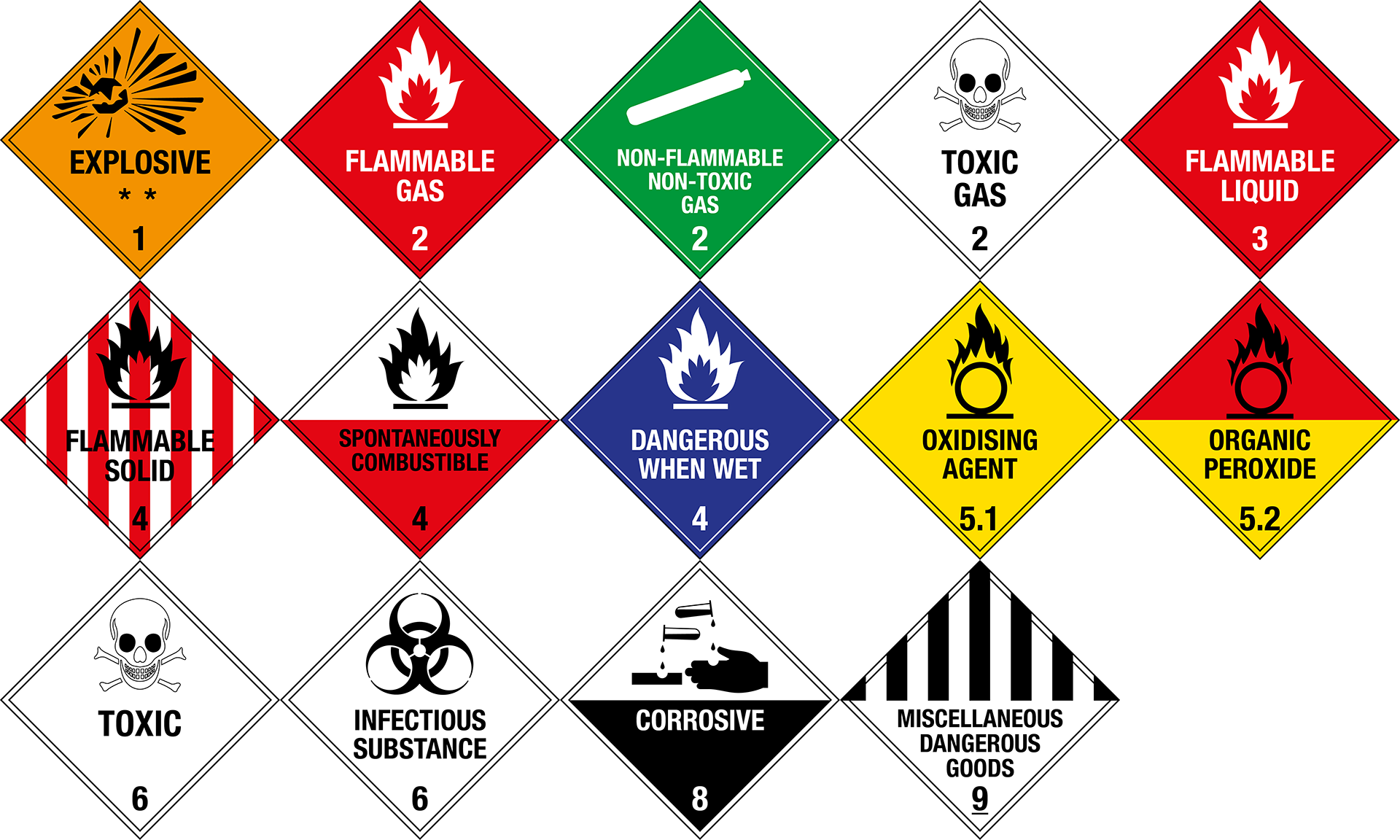
What placarding is required for dangerous goods and explosives transport?
A placard load refers to a vehicle carrying over a certain amount of dangerous goods (other than explosives, infectious and radioactive substances) that is required to display placards (i.e. Class label or Emergency Information Panel) during transport.
A vehicle must be placarded if it is carrying:
- dangerous goods in a receptacle, other than an article, with a capacity of more than 500 L or more than 500 kg
or
- an aggregate quantity of dangerous goods of 250 or more of:
- UN Division 2.1 goods (other than aerosols), for example LP Gas or acetylene cylinders or
- UN Division 2.3 goods, for example ammonia or chlorine gas, or
- Packing Group I dangerous goods, for example, sodium cyanide, carbon disulfide.
or
- an aggregate quantity of dangerous goods of 1,000 or more.
Exception
An aggregate quantity of dangerous goods of less than 2,000 that consists only of the following dangerous goods is not a placard load:
- dangerous goods that are packed in limited quantities, and
- dangerous goods that are:
- fireworks that are bon bons, party poppers or sparklers with a classification code of 1.4S
- domestic smoke detectors containing radioactive material
- lighters or lighter refills containing flammable gas
- fire extinguishers with compressed or liquefied gas, up to a net mass of 23 kg.
Definitions
Aggregate quantity means the total of:
- the number of kilograms of:
- solid dangerous goods; and
- articles (including aerosols), in the load; and
- the number of litres or kilograms, whichever is used in the transport documentation for the load to describe the goods, of liquid dangerous goods in the load; and
- the total capacity in litres of the receptacles in the load containing dangerous goods of UN Class 2 (other than aerosols)
Dangerous goods packed in limited quantities mean:
- the goods are packed in accordance with the Australian Dangerous Goods Code (ADG Code) 7th edition, Chapter 3.4
- the quantity of dangerous goods in each inner packaging or in each article does not exceed the quantity specified, or referred to, in column 7 of the Dangerous Goods List for those goods.
Typically, these are small packages.

